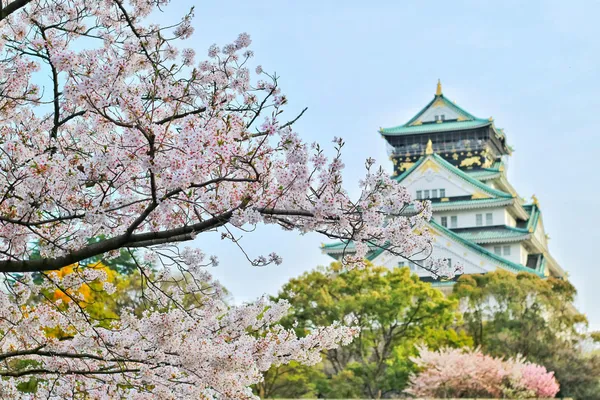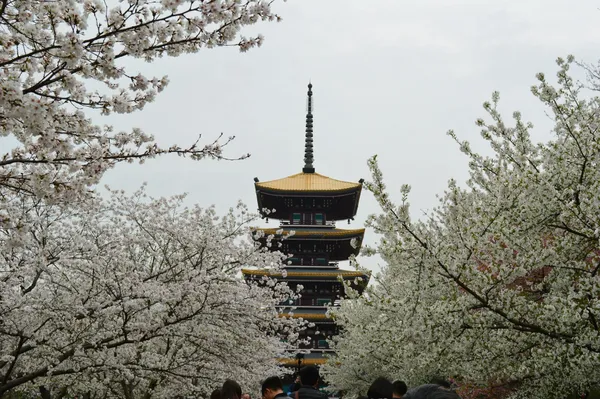59. SAKURA & HANAMI
Sakura, or cherry blossoms, are one of the most iconic symbols of Japan. Learn more about them.
SAKURA AND IMPORTANCE
Sakura, or cherry blossoms, are one of the most iconic symbols of Japan. Every spring, they transform cities and landscapes into breathtaking scenes of pink and white petals. But why do these flowers hold such deep cultural significance in Japan? And where are the best places to see them in Tokyo, Kyoto, and Osaka?
The significance of sakura in Japan
Cherry blossoms are not just admired for their beauty; they carry profound cultural meaning in Japan.
Impermanence and the concept of "mono no aware"In Japanese philosophy, the concept of mono no aware expresses an appreciation for the fleeting beauty of things. Since sakura bloom for only a few days before their petals fall, they serve as a reminder of life’s transience and the importance of cherishing every moment.
The tradition of hanami Hanami, or flower viewing, is a centuries-old tradition where people gather under cherry trees to picnic, drink, and celebrate the arrival of spring. It’s a time for socializing and connecting with nature.
A symbol of renewalThe blooming of sakura marks the beginning of the school year and fiscal cycle in Japan, symbolizing new beginnings and opportunities.
Where to see sakura in Tokyo
Tokyo has many fantastic spots to enjoy cherry blossoms:
Ueno Park – One of the most popular locations with over 1,000 cherry trees and a lively atmosphere during hanami.
Shinjuku Gyoen – A more tranquil park featuring different varieties of sakura, ensuring a longer blooming period.
Chidorigafuchi – A scenic spot where you can admire cherry blossoms while rowing a boat along the Imperial Palace moat.
Meguro River – A tunnel of cherry blossoms illuminated at night, creating a magical ambiance.
Where to see sakura in Kyoto
Kyoto, with its historic temples and shrines, becomes even more enchanting during cherry blossom season:
Philosopher’s Path – A picturesque canal-side walkway lined with cherry trees, perfect for a peaceful stroll.
Maruyama Park – A famous hanami spot featuring a massive weeping cherry tree illuminated at night.
Heian Shrine – A beautiful garden with a pond surrounded by cherry blossoms.
Arashiyama – A scenic area where cherry trees bloom along the Katsura River, offering breathtaking views of Togetsukyo Bridge.
Where to see sakura in Osaka
Osaka also boasts stunning cherry blossom spots:
Osaka Castle Park – A spectacular setting where cherry blossoms contrast beautifully with the historic castle.
Kema Sakuranomiya Park – A riverside park with over 5,000 cherry trees stretching along the Okawa River.
Shitenno-ji Temple – One of Japan’s oldest temples, surrounded by gorgeous cherry blossoms.
Expo ‘70 Commemorative Park – A spacious park featuring various cherry tree species in a serene environment.
Sakura are more than just flowers; they are a powerful symbol of Japanese culture, celebrating the fleeting beauty of life. Whether you visit Tokyo, Kyoto, or Osaka, each city offers unique spots to enjoy this breathtaking natural event. Be sure to plan your trip carefully, as the cherry blossoms only last one to two weeks, usually between late March and early April.

TRADITION OF HANAMI
Hanami (花見), meaning "flower viewing," is one of Japan’s most cherished traditions. Every spring, the country transforms into a breathtaking landscape of pink and white as the cherry blossoms (sakura) bloom. But hanami is more than just admiring flowers—it’s a cultural experience deeply rooted in history, bringing people together to celebrate the fleeting beauty of nature.
The origins of hanami
The tradition of hanami dates back over 1,000 years to the Heian period (794–1185), when members of the imperial court would hold poetry gatherings under the blooming cherry trees. Originally, hanami was reserved for the aristocracy, who admired plum blossoms (ume) before cherry blossoms became the focus. Over time, the practice spread to samurai warriors and eventually to the common people during the Edo period (1603–1868).
Today, hanami is a beloved national event, with people from all walks of life gathering in parks and gardens to enjoy the fleeting beauty of the sakura.
What happens during hanami?
Hanami is a social event where friends, families, and colleagues gather under cherry blossom trees for picnics, food, drinks, and celebrations. The atmosphere is lively, with people eating, drinking, and even singing karaoke under the blossoms.
Typical activities during hanami:
Picnicking under the sakura – People bring bento boxes, snacks, and drinks while sitting on blue tarps spread under the trees.
Drinking and celebrating – Many enjoy sake, beer, or tea, making hanami a joyful occasion.
Evening hanami (yozakura) – Some parks illuminate the cherry blossoms at night, creating a magical atmosphere.
Taking photos – Many take advantage of the short-lived bloom to capture stunning photographs.
Seasonal treats – Special sakura-themed foods and drinks, such as sakura mochi (sweet rice cake), pink dango (rice dumplings), and sakura-flavored tea, are enjoyed during this season.
The meaning behind hanami
Hanami is more than just a beautiful spectacle—it embodies the Japanese philosophy of impermanence, known as mono no aware (物の哀れ). This concept appreciates the transient beauty of life, symbolized by the cherry blossoms that bloom spectacularly but fall within a week or two.
For many Japanese people, hanami is a time for reflection, renewal, and appreciating the present moment before the blossoms disappear. It marks the arrival of spring and new beginnings, coinciding with the start of the academic and business year in Japan.
Best places to experience hanami in Japan
Japan has countless famous hanami spots, but here are some of the best in major cities:
Tokyo
Ueno Park – One of Tokyo’s most famous hanami spots, attracting large crowds with over 1,000 cherry trees.
Shinjuku Gyoen – A quieter alternative with a mix of early and late-blooming sakura, allowing for an extended viewing period.
Chidorigafuchi – A scenic area near the Imperial Palace where you can row boats under the blossoms.
Meguro River – Famous for its cherry blossom tunnels and illuminated night viewing (yozakura).
Kyoto
Maruyama Park – Kyoto’s most famous hanami spot, featuring a massive weeping cherry tree (shidare-zakura).
Philosopher’s Path – A picturesque canal lined with cherry trees, perfect for a peaceful walk.
Kiyomizu-dera Temple – Offers stunning views of cherry blossoms surrounding the temple.
Heian Shrine – Features a beautiful garden with sakura reflecting on the pond.
Osaka
Osaka Castle Park – A breathtaking hanami spot with cherry trees framing the historic Osaka Castle.
Kema Sakuranomiya Park – A riverside park with over 5,000 cherry trees, perfect for leisurely strolls.
Expo ‘70 Commemorative Park – A lesser-known but spacious park with numerous cherry trees.
When is the best time for hanami?
Cherry blossoms typically bloom between late March and early April, but the exact timing varies each year based on weather conditions. The Japan Meteorological Agency releases sakura forecasts each year to help people plan their hanami gatherings. In warmer regions like Kyushu, sakura may bloom earlier, while in northern areas like Hokkaido, they bloom in late April or even May.
Hanami is more than just a seasonal event; it is a reflection of Japan’s deep appreciation for nature and the fleeting beauty of life. Whether you're in Tokyo, Kyoto, or Osaka, experiencing hanami under the pink petals of the cherry blossoms is an unforgettable experience that embodies the essence of Japanese culture. So, if you’re visiting Japan in spring, grab a picnic, find a sakura-filled park, and enjoy this timeless tradition.

Op zoek naar dingen om te doen?
Bekijk mijn gids voor de beste gratis dingen om te doen, evenals routes en reistips om uw reis onvergetelijk te maken.

